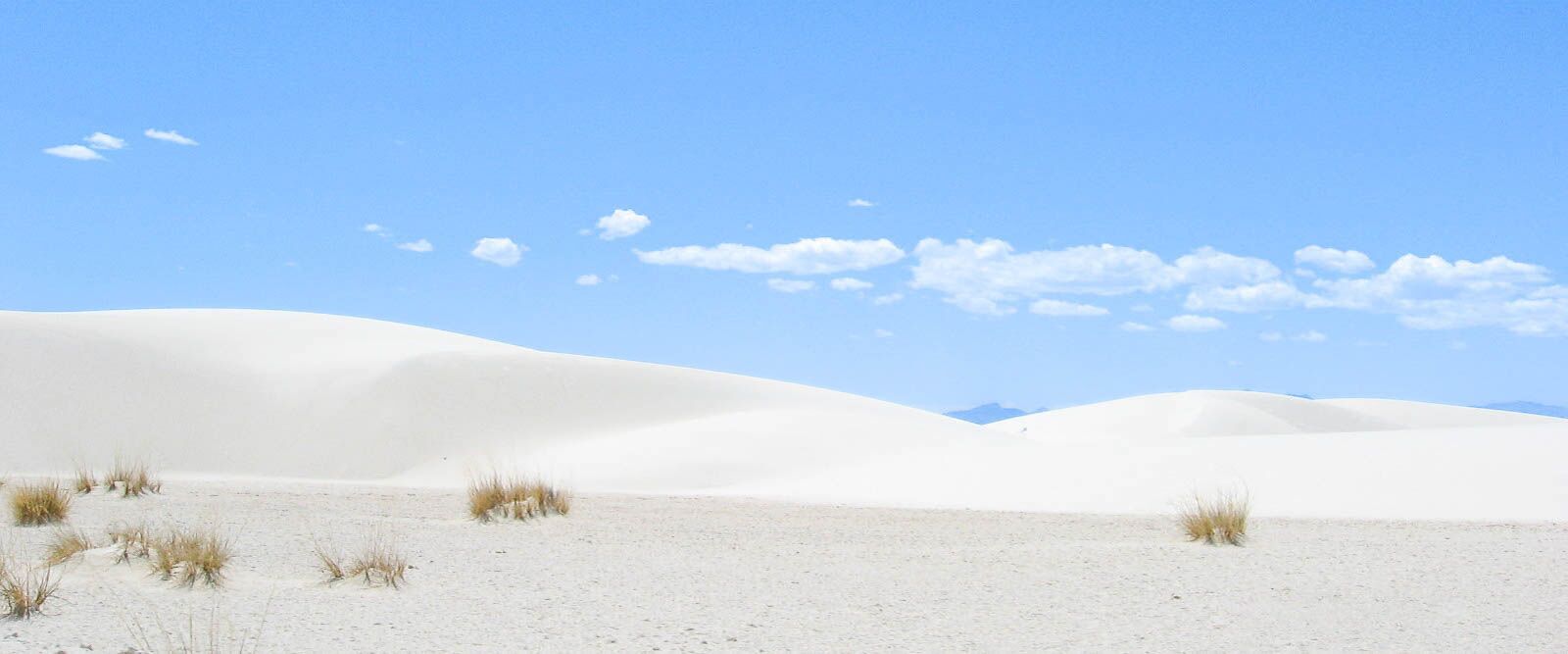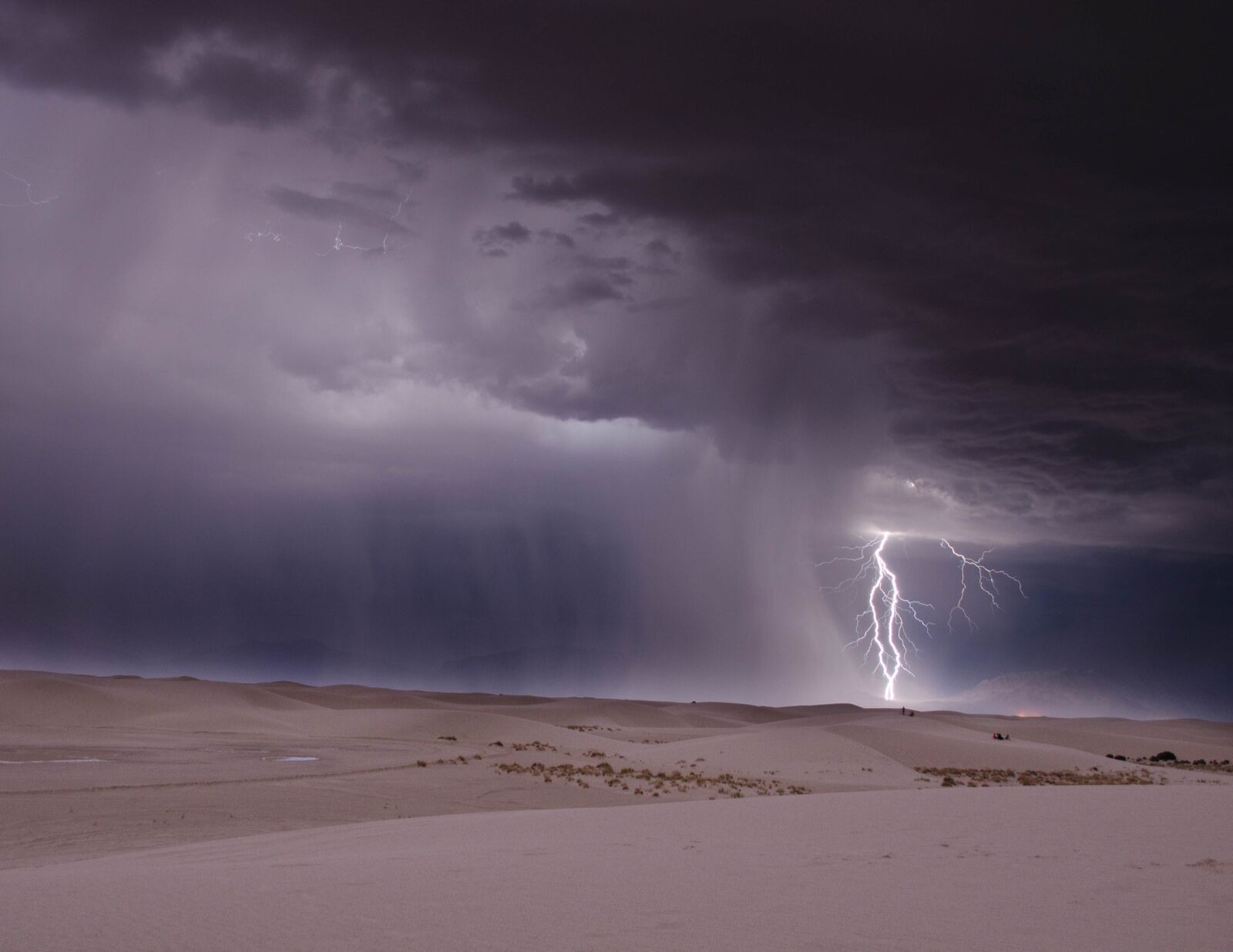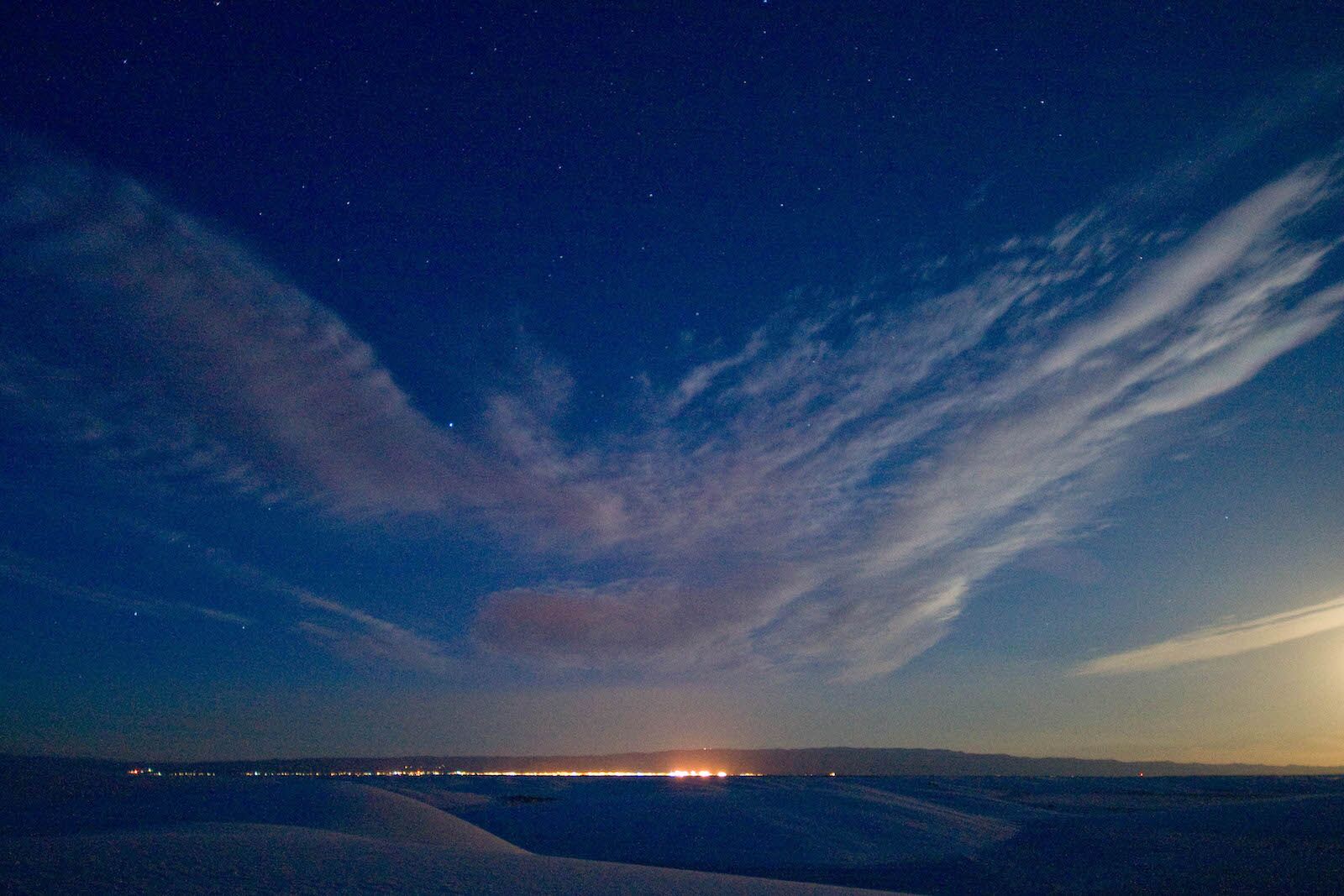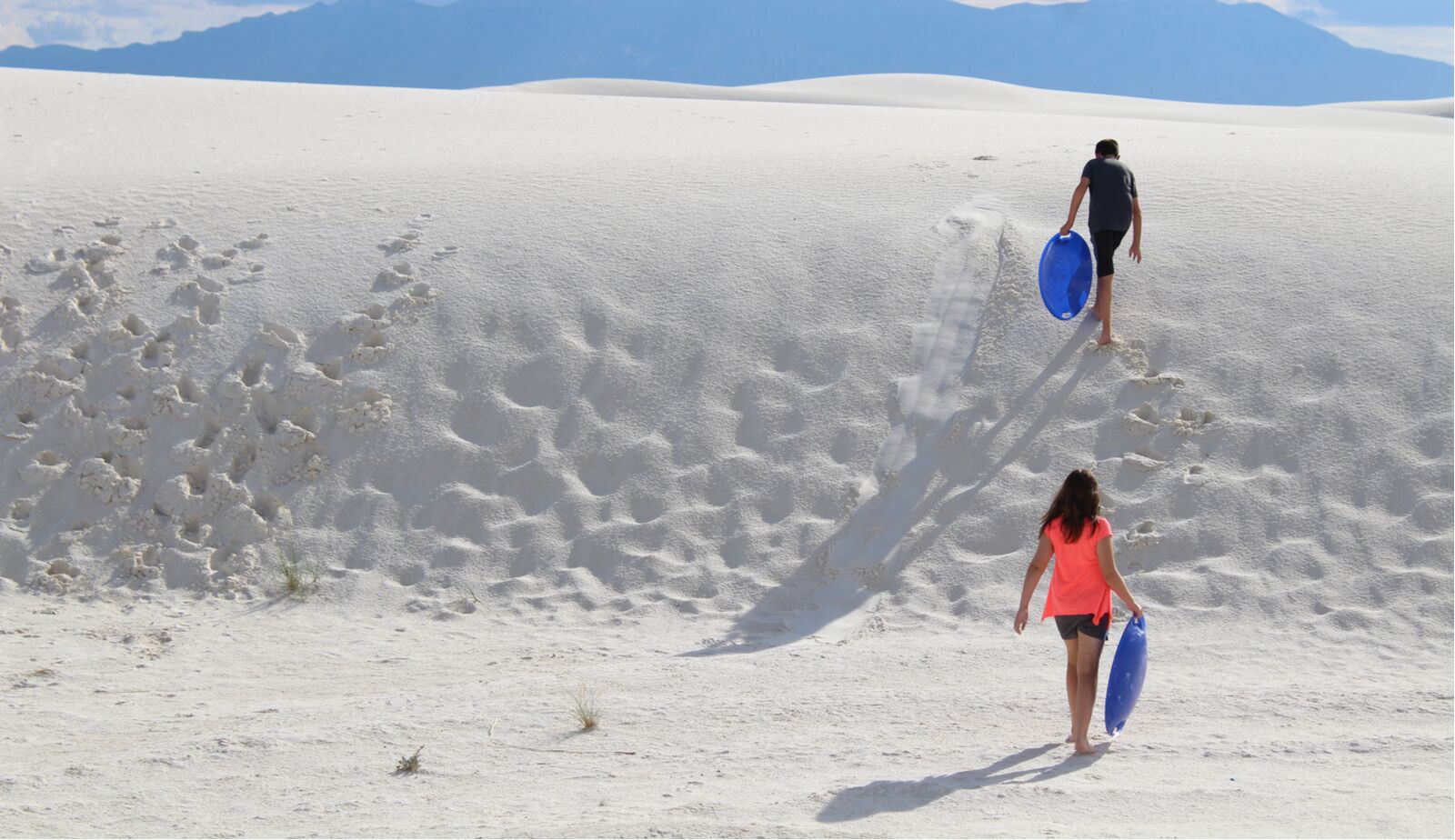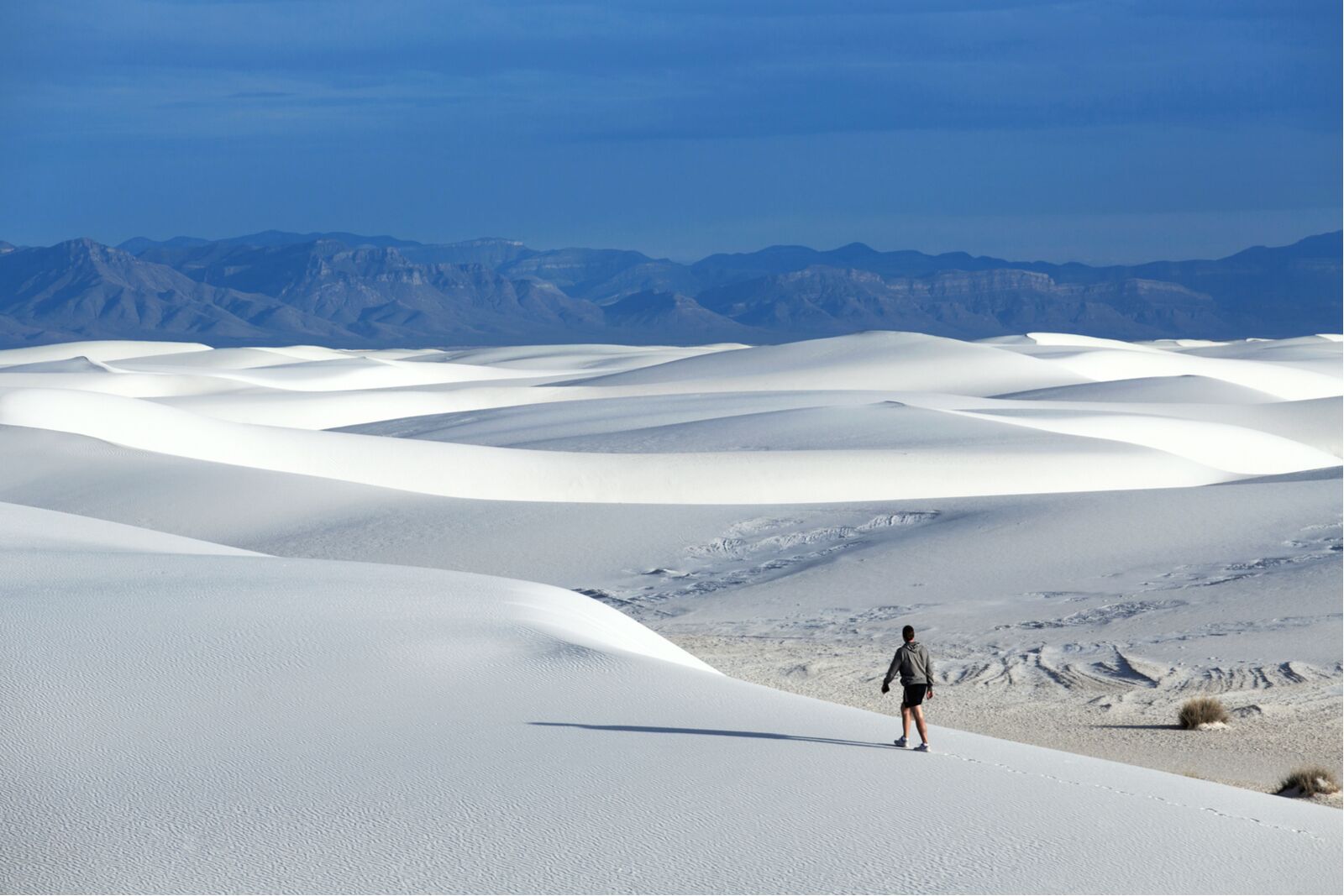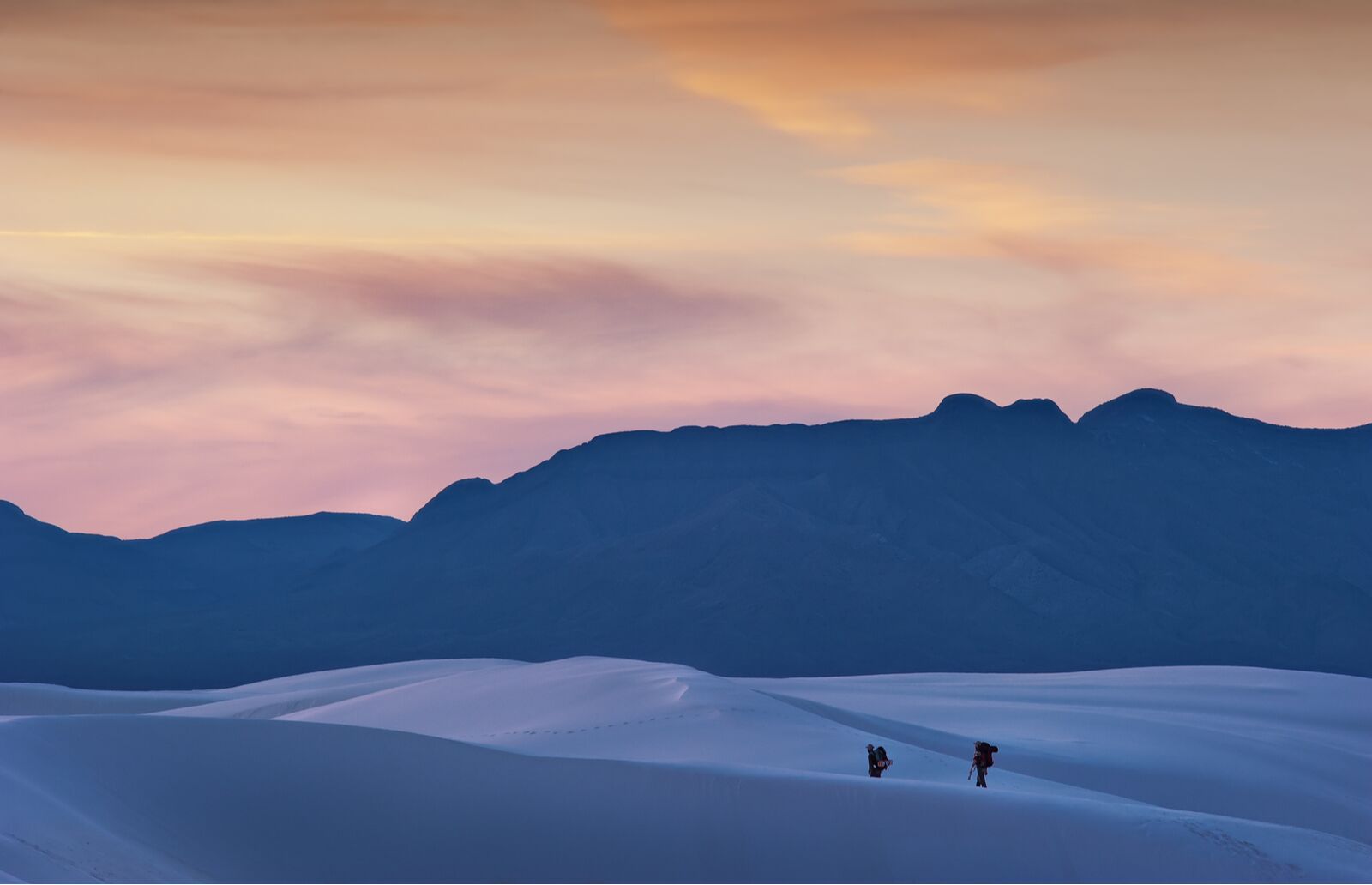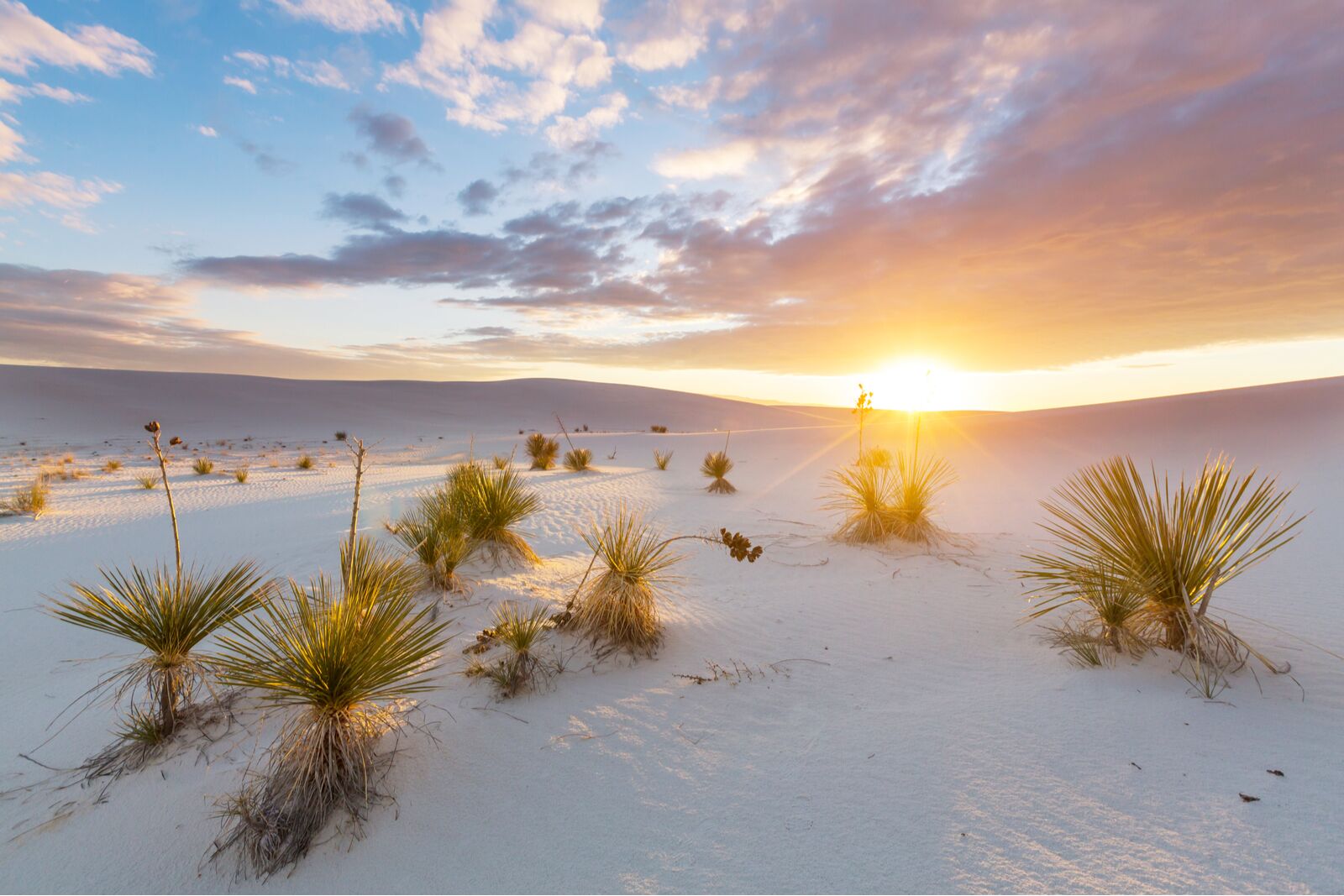White Sands National Park, née White Sands National Monument until 2019, is a vast, glistening field of snow-white gypsum in southern New Mexico. It’s directly between the cities of Las Cruces and Alamogordo, about 100 miles north of the US-Mexico border at the northern end of North America’s largest desert – the Chihuahuan Desert.
The unusually large gypsum deposit comes from minerals carried runoff from the nearby mountains, which settled into the floor of Lake Lucero. Over the last 10,000 years, Lake Lucero slowly shrunk, leaving behind the dramatic fields of white sand visitors can enjoy today.

